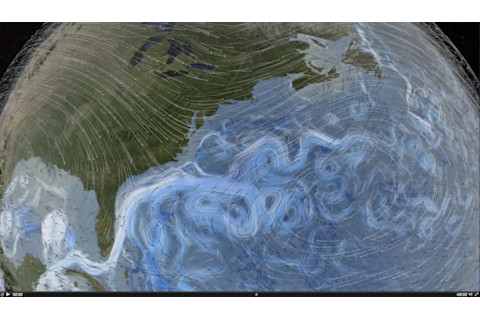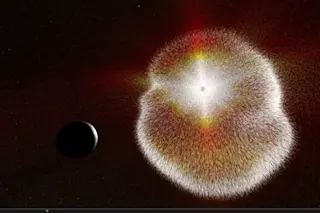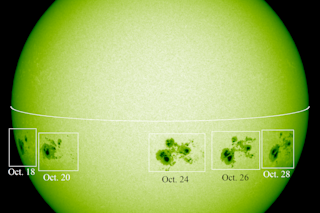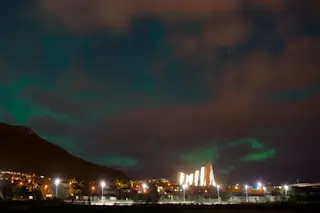A screenshot from an animation of a coronal mass ejection from the sun. Click on it and choose from the various options to see the full animation. (Image: NASA Goddard Space Flight Center Scientific Visualization Studio) On Thursday, the sun let loose a massive explosion of billions of tons of solar particles in what scientists call a coronal mass ejection, or CME. You can see a video and a stunning image of the event in my post about it from yesterday. Today, I found an incredible scientific visualization of a CME, what it does to our poor, unprotected planetary neighbor, Venus, and how Earth's self-generated magnetic bubble shields us from the mayhem that would otherwise ensue. The image at the top of this post is a screenshot from the visualization. Click on it and you'll be taken to a NASA Goddard Space Flight Center web page where you can choose which format with which to view the video. It's narrated, and everything is clearly explained. The visualization doesn't stop with the coronal mass ejection sweeping past Earth harmlessly:

Another screenshot from the visualization. It also takes us on a journey down to the surface for an exploration of atmospheric and ocean currents, and it provides an excellent description of how these components of the climate system redistribute heat around the planet (which ultimately comes from the sun, of course). The image above is a screenshot from that part of the visualization. Enjoy!






